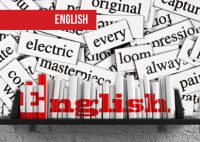Cloze Test New pattern Questions for SBI PO : Set 5
Want to Become a Bank, Central / State Govt Officer in 2020?
Join the Most awarded Coaching Institute & Get your Dream Job


Now Prepare for Bank, SSC Exams from Home. Join Online Coure @ lowest fee
Lifetime validity Bank Exam Coaching | Bank PO / Clerk Coaching | Bank SO Exam Coaching | All-in-One SSC Exam Coaching | RRB Railway Exam Coaching | TNPSC Exam Coaching | KPSC Exam Coaching
Cloze Test New pattern Questions for SBI PO : Set 5
D.1-10): In the following passage there are words highlighted, each of which has been numbered. These numbers are printed below the passage and against each, four words are suggested marked as (a), (b), (c) and (d) out of which only one word fits in. If the given word itself is appropriate mark your answer as (e).
E) Keys have been around for a long time. The earliest, made from wood, date back 4,000 years, to the ancient Egyptians. The Romans improved them a bit by making them from metal. But there, more or less, they have (1) promoted. Electronic card-keys aside, a key is still, basically, a piece of metal sporting a series of grooves, teeth and indentations which, when (2) fixed into a keyway, line up to move pins and levers to lock or unlock a mechanism. Such keys are made with (3) conventional manufacturing techniques, such as cutting and stamping. But now there is a new way, in the form of 3D printing, to craft metal objects. And keys are about to (4) resisting to it, to the great benefit of key holders. 3D printer works by melting together layers of material that are added successively to the object being created. It can thus make something from the inside out, as it were, by printing (5) perplex internal features and then covering them with a solid layer. Features shielded from view are extremely difficult to copy, let alone reproduce using normal machine tools. What better way to (6) decimate the key, (7) portrayed Alejandro Ojeda, a mechanical engineer who at the time was studying at the Swiss Federal Institute of Technology, in Zurich, than to 3D-print it in this way. What (8) contrite his interest is how simple it is to copy most keys: a few minutes at a local key shop will usually suffice. And copying is getting easier. It is now possible to take a picture of a key with a smartphone and turn the image into a computer file that can be used to make a (9) apparent with the aid of a cheap, hobbyist 3D printer. The resulting duplicate will probably be printed in plastic, and thus lack durability. But it is likely to be good enough to work at least once—and once might be enough. Dr Ojeda’s answer is the Stealth Key (pictured). This is printed in titanium, one of the toughest of metals. Its teeth are hidden under a pair of narrow ledges, making it unscannable. But when inserted into the lock the teeth can operate the mechanism.To bring the Stealth Key to market, Dr Ojeda teamed up with Felix Reinert, an expert on 3D-printing metal, to found a firm called Urban Alps. Jiri Holda, a lock designer, joined them to help (10) construct a key making process that employs an industrial 3D-printing system called selective laser melting (SLM).
1)
a) stayed
b) pierced
c) penetrated
d) advanced
e) No correction required.
2)
a) stabbed
b) pervaded
c) inserted
d) hold
e) No correction required.
3)
a) sensible
b) astute
c) rational
d) shrewd
e) No correction required.
4)
a) conquering
b) withstand
c) succumb
d) Quelling
e) No correction required.
5)
a) straight
b) candid
c) forthright
d) intricate
e) No correction required.
6)
a) replicate
b) annihilate
c) reinvent
d) infuriate
e) No correction required.
7)
a) relayed
b) banished
c) reckoned
d) dislodged
e) No correction required.
8)
a) repressed
b) prompted
c) deterred
d) restrained
e) No correction required.
9)
a) primitive
b) indigenous
c) veritable
d) replica
e) No correction required.
10)
a) evolve
b) pioneer
c) devise
d) hatch
e) No correction required.
Answer Key
1) a 2) c 3) e 4) c 5) d 6) c 7) c 8) b 9) d 10) c.


